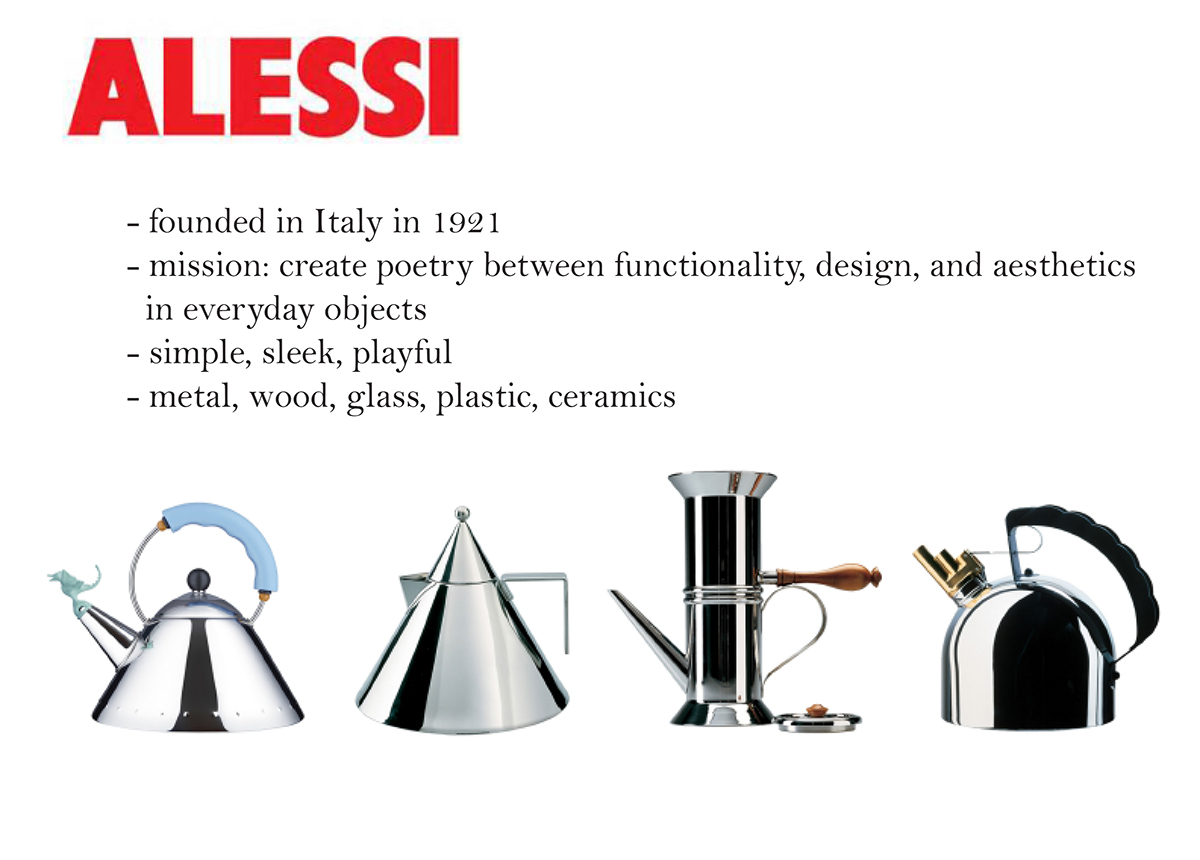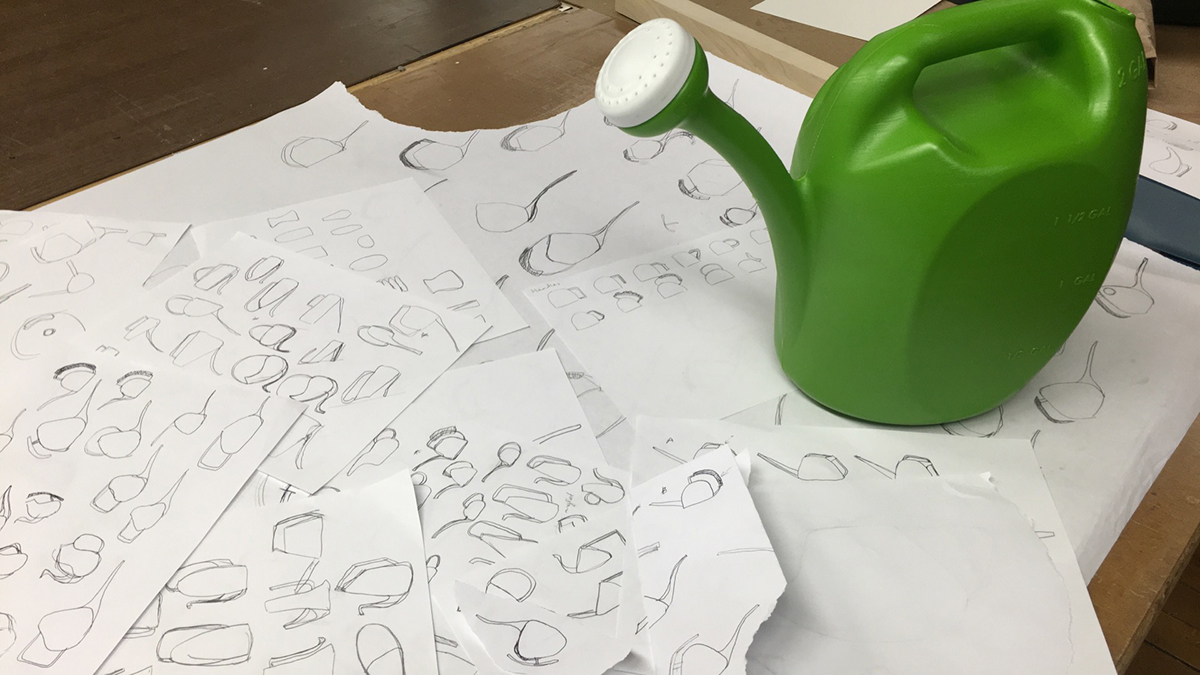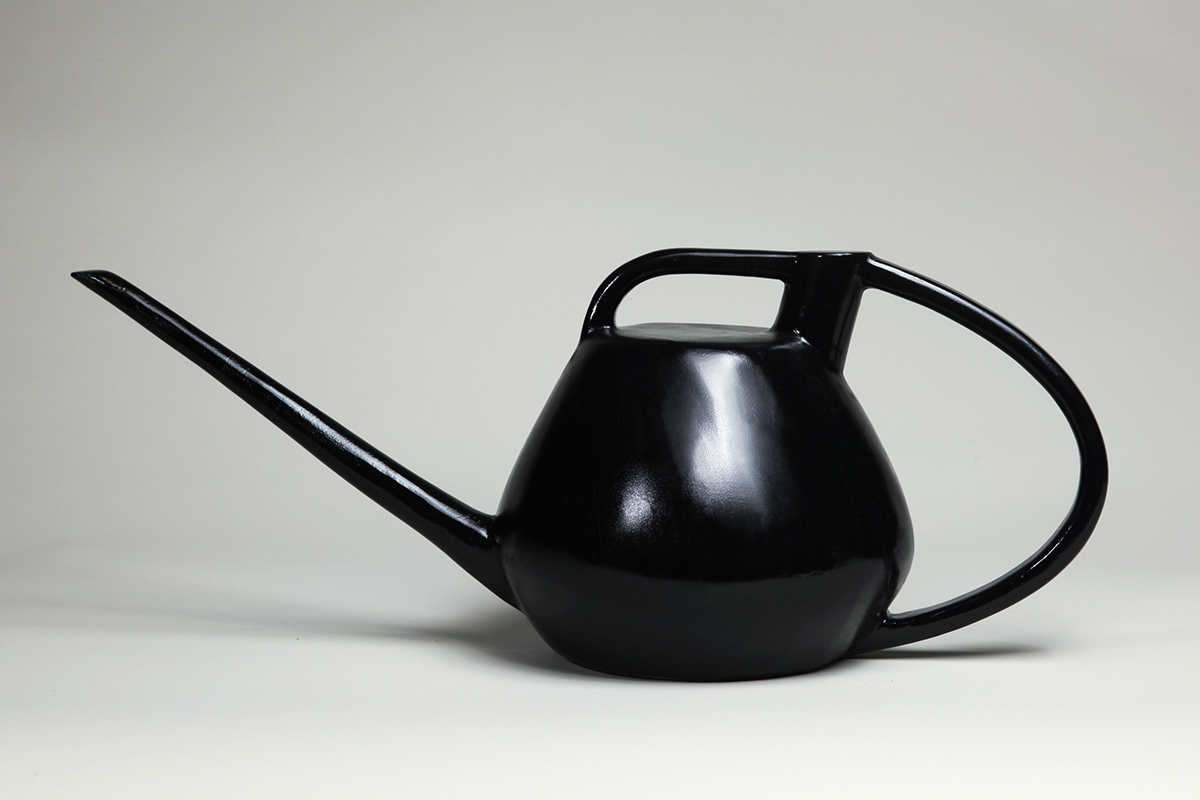Prototyping Form, Fall 2016, Instructor: Ayako Takase
Watering Can Design
A watering can design informed by brand research and analysis.

Prompt | Timeline: 2 weeks
Design and create a full scale model of a simple, iconic watering can.
The main purpose of this assignment is an exploration of visual aesthetics in the form of watering can while providing the standard functionality of the product category. You are to research and analyze existing watering cans to establish a thorough understanding of the market, and select an established brand (not necessarily one that sells electric kettles already) that you will be designing for. This project will culminate with a full scale appearance model for visualization and simple usability testing.
Requirements:
-The watering can is to be designed for an established brand of your choice. This brand does not need to be currently producing a watering can, or even be in the general category, but should have a brand language that you can translate into a successful form.
-There must be extensive formal studies both in sketches and sketch models to arrive to the final design. Do not to settle on a single idea from the outset, but rather use the process to both experiment and refine designs. Throughout the development of the forms, assessments must be made of the usability of the design.
-Must ideally be able to hold and dispense water
-Must have a capacity between .5 and 1.5 gallons of water
-Must have a handle that allows for both carrying and pouring grips
-Must have a spout that extends from the body by at least 75% of the length of the body
-The spout must be joined to the bottom of the body and rise to an elevation above the filling hole to provide effective pouring action.
-Must have an opening at or near the top of the body to allow for filling. The size and shape of the opening should be proportional to the capacity of the watering can: larger can = larger filling hole.
Process
I started out by picking Alessi as my brand. By looking at their different products, I found three words to describe Alessi's form language – simple, sleek, and playful. I also found that metal, wood, glass, plastic, and ceramics were all common materials used in their product line.

Next, I looked at inspiration for watering cans online. I liked the watering cans pictured below due to their bulbous forms, the continuity of the handle through the body of the watering can, and/or use of metal as a material. I was also intrigued by the idea of having water enter the watering can from the exterior, rather than from under the handle.

Below is one of the pages of quick sketches I made to determine what kind of form I wanted my watering can to have. I realized that I wanted to create a continuity between the handle and the spout.


Next, I made a plasticine model to figure out what the watering can would look like in 3D.

I then revised the form of the watering can in the sketches below.


Next, I created a quick full-scale fin model to determine the relative proportions of the form.

Below is an orthographic of my finalized design. I used this drawing to help me make my final 3D model.

I carved blue foam to create the spout and body of my watering can model, as well as wood for the handles. I used long metal pins to secure the different parts in place. This allowed for my model to be easily handled in order to demonstrate how the watering can would function. In my design, I wanted there to be options for where the user could hold the watering can based on how much water was left in the vessel. I finished the model by coating it with joint compound, sanding it, and coating it with a gloss primer to mimic a metal finish.


Below is a rendering of the final watering can, which would ideally be made out of chrome metal.



